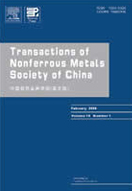Environmentally assisted cracking resistance of Al-Cu-Li alloy AA2195 using slow strain rate test in 3.5% NaCl solution
(Materials and Metallurgy Group, Materials and Mechanical Entity, Vikram Sarabhai Space Centre, Thiruvananthapuram-695022, Kerala, India)
Abstract: The general corrosion and environmental cracking resistances of Al-Cu-Li alloy AA2195 were investigated in 3.5% NaCl environment and compared with those of another high strength alloy AA2219. The general corrosion resistance of these alloys was examined using immersion corrosion and potentiodynamic polarization tests, while the stress corrosion cracking (SCC) resistance was evaluated by slow strain rate test (SSRT) method. The tested samples were further characterized by SEM-EDS and optical profilometry to study the change in corrosion morphology, elemental content and depth of corrosion attack. The reduction in ductility was used as a parameter to evaluate the SCC susceptibility of the alloys. The results indicated that the corrosion resistance of AA2195 alloy was better than that of AA2219 alloy as it exhibited lower corrosion rate, along with lower pit depth and density. However, the SCC index (εNaCl/εair) measured was greater than 0.90, indicating good environmental cracking resistance of both the alloys. Detailed fractography of the failed samples under SEM-EDS, in general, revealed a typical ductile cracking morphology for both the alloys.
Key words: Al-Cu-Li alloy; stress corrosion cracking; fractography; potentiodynamic polarization

